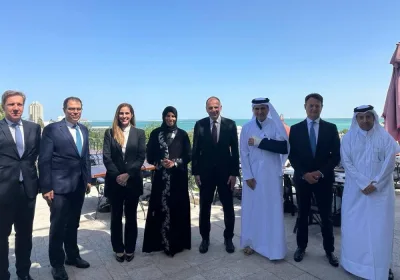By Dr Arno Maierbrugger
investvine.com
Mobile telephony has experienced a huge boom in Southeast Asia over the past decade, providing affordable communication for hundreds of millions of people who, at the same time, have skipped over a sector evolution by not even having owned a fixed-line telephone before. However, as with every innovation cycle, the market for mobile telephony is slowly reaching maturity in more prosperous nations in the region such as Malaysia and Thailand, where mobile phone penetration has already surpassed the 100% mark, indicating that more and more people are using two SIM cards at the same time, and competition has become relatively stiff between the operators.
The questions remains where the markets in Asean are, that are still fertile ground for mobile telephony growth, and, interestingly, Ooredoo (formerly Qtel) has perfectly identified the two remaining major ‘gold mines’ in the region: Indonesia and Myanmar.
Ooredoo has bought into Indonesia’s mobile network provider Indosat, the second largest mobile network operator in the country behind Telkomsel, a major step for the Qataris to gain foothold in the Asean market and in a country of 240mn people with a mobile phone penetration as of 2012 stood at around 90% (with wide regional gaps, though), which technically leaves a wide open field of 24mn still unsupplied customers. Indosat is now mulling to change its brand to Ooredoo Indonesia, the network provider’s CEO, Alexander Rusli, told Inside Investor, envisaging a presence for the new brand from the Middle East in a core market of the region. Ooredoo will invest into Indosat to modernise its network and broaden its 3G coverage, reaching out all over the huge archipelago.
In line with its strategy to expand further into Southeast Asia, Ooredoo has now also joined the bidding round for one of Myanmar’s new mobile phone licences and has been shortlisted among 12 bidders for the final stage of the tender where winners are expected to be announced in June 2013.
Myanmar’s nascent telecommunications sector is considered one of the most lucrative in the region after the once-isolated country opened up to foreign investment. Only 5.4mn of Myanmar’s 60mn population had a mobile-phone subscription at the end of 2012, according to government figures. The government wants to increase the penetration to between 75% and 80% by 2015-2016. It hopes that awarding licences to private operators will introduce competition and investment to the sector.
Ooredoo, however, will have to compete in Myanmar with international majors such as Vodafone, Telenor and Singapore Telecommunications, as well as with MTN Dubai, which also made it on the shortlist, and at the end probably have to enter a joint venture to get access to the Myanmar market. In any case, Qatar’s advance into the Southeast Asian mobile phone sector is remarkable and has been an absolutely consequent business decision.
nOur columnist Dr Arno Maierbrugger is Editor-in-Chief of www.investvine.com, a news portal owned by Inside Investor focusing on Southeast Asian economic topics as well as trade and investment relations between Asean and the GCC. The views expressed are his own.



